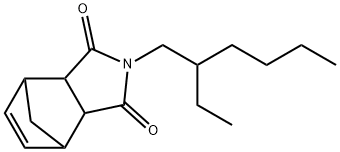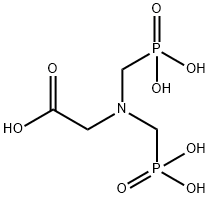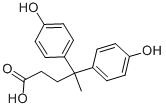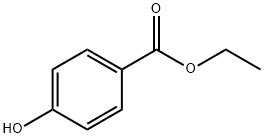Piperonyl butoxide
Synonym(s):α-(2-(2-Butoxyethoxy)ethoxy)-4,5-methylenedioxy-2-propyltoluene, 5-((2-(2-Butoxyethoxy)ethoxy)methyl)-6-propyl-1,3-benzodioxole;2-(2-Butoxyethoxy)ethyl (6-propylpiperonyl) ether;4,5-Methylenedioxy-2-propylbenzyldiethyleneglycol butyl ether;Piperonylbutoxide
- CAS NO.:51-03-6
- Empirical Formula: C19H30O5
- Molecular Weight: 338.44
- MDL number: MFCD00005842
- EINECS: 200-076-7
- SAFETY DATA SHEET (SDS)
- Update Date: 2025-12-17 09:49:46

What is Piperonyl butoxide?
Absorption
Piperonyl butoxide is applied topically. In a study evaluating the 7-day urinary accumulation of piperonyl butoxide after topical application, it was found that approximately 2% of the dose was absorbed through the skin. The percutaneous absorption when applied to the scalp was found to be 8.3%.
Toxicity
The acute oral LD50 for rats is 4,570 to 12,800 mg/kg and 2,700 to 5,300 mg/kg for rabbits. It is low to very low in toxicity when ingested by mammals.
Description
Piperonyl butoxide (PBO) is a water insoluble colorless to pale yellow liquid that was developed in the 1940s to increase the effectiveness of various pesticides. It is currently registered as an active ingredient in more than 1500 products used for indoor or outdoor pesticides, including agricultural maintenance of some food crops.
Chemical properties
Piperonyl butoxide (PB) is a Light Yellow Liquid. It has no smell or a faint smell and a slightly bitter taste. It does not dissolve in water but can be dissolved in mineral oil and most organic solvents. It is stable to light, resistant to hydrolysis, and is not corrosive. In terms of toxicity, the LD50 (lethal dose for 50% of a test population) is 7500mg/kg in rats when administered orally.
The Uses of Piperonyl butoxide
Piperonyl butoxide is used as a synergist for pyrethrins and their synthetic analogues.
Background
Piperonyl butoxide (PBO) is an organic compound used as a component of pesticide formulations. It is used for the treatment of head, pubic (crab), and body lice. Piperonyl butoxide is a synergist. It has no pesticidal activity of its own, but acts to increase the activity of pesticides such as carbamates, pyrethrins, pyrethroids, and rotenone. Piperonyl butoxide is a semisynthetic derivative of safrole.
Indications
For the treatment of head, pubic (crab), and body lice.
What are the applications of Application
Piperonyl Butoxide is An insecticide synergist
Definition
ChEBI: Piperonyl butoxide is a member of benzodioxoles. It has a role as a pesticide synergist.
Preparation
First, safrole is obtained from allyl chloride and methylenedioxybenzene. Then, piperonyl butoxide is produced by catalytic hydrogenation, chloromethylation, and etherification reactions.
General Description
Pale yellow to light brown liquid with a mild odor and a faint bitter taste.
Air & Water Reactions
Insoluble in water.
Reactivity Profile
Piperonyl butoxide can react with oxidizing materials.
Fire Hazard
Piperonyl butoxide is combustible.
Agricultural Uses
Insecticide synergist: A U.S. EPA restricted Use Pesticide (RUP). Not listed for use in EU countries. Piperonyl butoxide is a synergist, i.e., not a pesticide itself, but enhances the properties of other chemicals. It is used with other pesticides such as pyrethrins, pyrethroids, rotenone and carbamates in food and non-food agricultural products, home and garden products, termite and mosquito products, and veterinary pesticide products. It inhibits the insect’s ability to break down an insecticide before it takes effect, thereby prolonging the action, and reduces the necessity for using a stronger formulation.
Trade name
Trade names have included Butoxide, Butacide, Butocide, and Pyrenone (mixture with allethrin).
Pharmacokinetics
Piperonyl butoxide does not affect the mixed-function oxidase system in humans. In small trials in human volunteers, usual doses of piperonyl butoxide had no effect on humans.
Safety Profile
Poison by skin contact. Moderately toxic by ingestion and intraperitoneal routes. An experimental teratogen. Experimental reproductive effects. Many glycol ether compounds have dangerous human reproductive effects, Questionable carcinogen with experimental tumorigenic data. Mutation data reported. Combustible when exposed to heat or flame; can react with oxidizing materials. To fight fire, use foam, CO2, dry chemical. When heated to decomDosition it emits PLATINOL 0 cis-PLATlNUM(II) DIAMMINE- DICHLORIDE
Environmental Fate
PBO is rapidly degraded (half-life 8 h) in the environment by photolysis and is metabolized by soil microorganisms. Its estimated atmospheric half-life is approximately 3 h.
Metabolic pathway
Piperonyl butoxide is used primarily in admixture with pyrethrins and
some of the pyrethroids to enhance and prolong their insecticidal action.
Much of this use is in domestic and industrial situations. Metabolism
studies were conducted soon after its discovery and first use in the 1950s
and 1960s. The main impetus initially was to understand the mode of
action as a synergist. When this was shown to be due to the inhibition of
oxidative metabolism, further studies were conducted to address possible
toxic interactions with other pesticides and drugs in man.
Piperonyl butoxide undergoes rapid photodegradation and microbial
degradation in soil. It is also rapidly metabolised in insects and mammals
by oxidative attack at the methylenedioxy carbon atom and in the side
chain. A comprehensive review by Casida (1970) describes the chemistry,
mode of action and metabolism of piperonyl butoxide and several related
methylenedioxyphenyl compounds. Though published nearly 30 years
ago, the review remains a very useful compilation of a large amount of
information, supported by more than 300 references.
Metabolism
Piperonyl butoxide is minimally absorbed in humans. Metabolism has not been studied.
Degradation
Piperonyl butoxide is stable to hydrolysis at pH 5,7 and 9 in sterile buffers in the dark at 25 °C. It is rapidly degraded in aqueous solution at pH 7 in sunlight with a DT50 of 8.4 hours (PM). The compound was found to be relatively stable under a variety of irradiation conditions as a thin film on glass or in organic solvent (methanol, benzene and cyclohexane). Loss of the butoxyethoxy side chain was observed to give 5-methyl-6-propyl-l,3- benzodioxole (2), butoxyethanol (3) and ethanediol (4) (Fishbein and Gaibel, 1970). These studies did not utilise radiolabelled compound. The partial pathways are shown in Scheme 1.
Toxicity evaluation
Piperonyl butoxide has low to very low toxicity in birds.Researchers consider piperonyl butoxide moderately toxic to fish,although it is unlikely to accumulate.Some aquatic invertebrates may be highly sensitive to this compound.
As a synergist, PBO inhibits mixed-function oxidases, including cytochrome P450, and resistance-associated esterases that allow insects to degrade an insecticide, allowing enhanced insecticide efficacy. It does not effectively act as a synergist in mammals.
Properties of Piperonyl butoxide
| Melting point: | <25 °C |
| Boiling point: | 180 °C |
| Density | 1.059 g/mL at 25 °C(lit.) |
| vapor pressure | 0.02 hPa (60 °C) |
| refractive index | n |
| Flash point: | >230 °F |
| storage temp. | 2-8°C |
| solubility | water: slightly soluble0.0289g/L at 20.4°C |
| form | Liquid |
| color | Clear yellow |
| Specific Gravity | 1.060 (20/4℃) |
| Odor | mild odor or odorless |
| Water Solubility | <0.1 g/100 mL at 18 ºC |
| Merck | 14,7476 |
| BRN | 288063 |
| Stability: | Stable. Combustible. Incompatible with oxidizing agents. |
| CAS DataBase Reference | 51-03-6(CAS DataBase Reference) |
| NIST Chemistry Reference | Piperonyl butoxide(51-03-6) |
| IARC | 3 (Vol. 30, Sup 7) 1987 |
| EPA Substance Registry System | Piperonyl butoxide (51-03-6) |
Safety information for Piperonyl butoxide
| Signal word | Warning |
| Pictogram(s) |
 Environment GHS09 |
| GHS Hazard Statements |
H410:Hazardous to the aquatic environment, long-term hazard |
| Precautionary Statement Codes |
P273:Avoid release to the environment. P391:Collect spillage. Hazardous to the aquatic environment P501:Dispose of contents/container to..… |
Computed Descriptors for Piperonyl butoxide
| InChIKey | HHZWGSFIZRNPFB-UHFFFAOYSA-N |
New Products
Sodium glycochenodeoxycholate, >98% Indole Methyl Resin tert-butyl 9-methoxy-3-azaspiro[5.5]undecane-3-carboxylate Gabapentin EP Impurity A 2,5-dichloro-N-hydroxy-4,6-dimethylpyridine-3-carboximidamide 4-Chloro-7-tosy1-7Hpyrrolo[2,3-d]pyrimidine 1,3-Diphenylurea 1,1’-CARBONYLDIIMIDAZOLE R-2-BENZYLOXY PROPIONIC ACID N-METHYL INDAZOLE-3-CARBOXYLIC ACID Zinc Bis-glycinate 2-Hydroxy-5-nitroacetophenone 2,4-dihydroxybenzaldehyde 3-(4-morpholinophenylamino)-5-amino-1H-pyrazole-4-carbonitrile 1,3-Diethyl-1,3-Diphenylurea Methyl 2-methylquinoline-6-carboxylate 2-((4-morpholinophenylamino) (methylthio) methylene) malononitrile 2-HYDROXY BENZYL CYANIDE DIETHYL AMINOMALONATE HYDROCHLORIDE 5-BROMO-2CYANO PYRIDINE Boldenone Clarithromycin Ethinyl Estradiol StanozololRelated products of tetrahydrofuran








You may like
-
 Piperonyl butoxide 99%View Details
Piperonyl butoxide 99%View Details
51-03-6 -
 Piperonyl butoxide, 99% CAS 51-03-6View Details
Piperonyl butoxide, 99% CAS 51-03-6View Details
51-03-6 -
 Piperonyl butoxide CAS 51-03-6View Details
Piperonyl butoxide CAS 51-03-6View Details
51-03-6 -
 Piperonyl Butoxide CAS 51-03-6View Details
Piperonyl Butoxide CAS 51-03-6View Details
51-03-6 -
 Piperonylbutoxide CAS 51-03-6View Details
Piperonylbutoxide CAS 51-03-6View Details
51-03-6 -
 Piperonylbutoxide CAS 51-03-6View Details
Piperonylbutoxide CAS 51-03-6View Details
51-03-6 -
 Piperonylbutoxide CAS 51-03-6View Details
Piperonylbutoxide CAS 51-03-6View Details
51-03-6 -
 White Piperonyl Butoxide Powder, For Agriculture, Grade: Bio Tech GradeView Details
White Piperonyl Butoxide Powder, For Agriculture, Grade: Bio Tech GradeView Details
51-03-6
